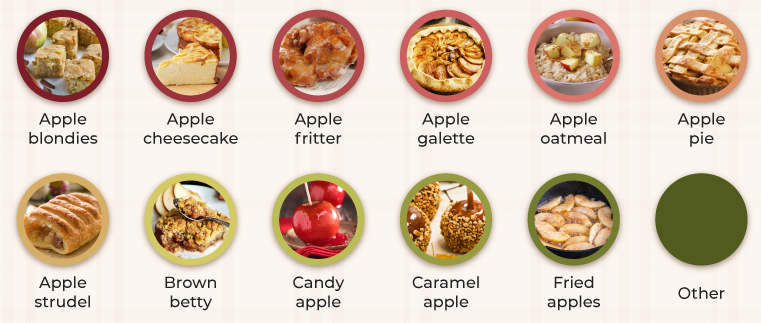New Jersey’s Favorite Apple Treat For Fall
Homemade apple pie amongst an Autumn season setting in Toronto, Ontario, Canada, on October 07, 2021. (Photo by Creative Touch Imaging Ltd./NurPhoto via Getty Images)
Earlier this week we talked about the benefits of eating apples, and how the phrase “an apple a day keeps the doctor away” is actually true. Check out that story here. Well now, the folks at Shane Co. have taken your regular apple and transformed it into delicious apple treats. Though the question remains, which apple treat ranked the best in each state? Because while everyone may love the classic apple pie, you also have well-liked apple cider donuts and even caramelized apples!
The method used in Shane. Co’s study compared the google trends of some of the most popular apple treats in each state to determine how often they are being searched as well as during what seasons they are being searched. So, before we go bobbing for Jersey’s favorite apple treat let’s see which one was the most popular across the country. To nobody’s surprise, we have a tie, but we didn’t see these treats coming. Apple Cheesecake and Apple Strudel were both tied with six states saying that they are the best apple treat to enjoy.

New Jersey alongside states like Maryland, Ohio, and Missouri voted for apple cheesecake, and looking at the data November is when this fall treat is searched the most, meanwhile, apple strudel is more of an October treat. In second place we have apple fritters which gained the favor of five states. Oh, and that classic apple pie, turns out has been pushed aside for other treats as it was only chosen by two states.
I’m not exactly sure where I stand on the apple debate, but if I had to pick a side, I would lean more towards the apple strudel side. Though you can’t go wrong with any treat that has apples in the mix, as it’s the perfect way to say you’re eating healthy while enjoying some of your favorite fall treats. To see the full study click here.
How do you like them apples?
Stay Food Safe This Thanksgiving Holiday With These Tips
As we start counting down the days until Thanksgiving, the U.S. Department of Agriculture (USDA) is reminding all of us how important it is to remember the steps to food safety.
If you’re hosting or even just offering to cook up a dish or two this year, you’ll want to read up on how to make sure to keep your stomach full of turkey and free from foodborne on November 24.
“While the four steps to food safety — clean, separate, cook and chill — are important every day and at every meal, they are particularly significant on Thanksgiving,” said USDA Deputy Under Secretary Sandra Eskin in a press release. “There will likely be many guests and many delicious dishes at your holiday table, but you don’t want to invite any foodborne pathogens. Follow those four steps — in particular remember to use a food thermometer — and your Thanksgiving dinner will be a safe one.”
Keep your Thanksgiving celebration food safe by following the tips below.
Joel Katz is the Morning Show Personality, Assistant Program Director, Podcast Host, Voiceover artist, audio producer, and Digital Content Writer for Magic 98.3. Joel has been working in New Jersey radio since college and started at Magic in 2002 as the Morning Show Host, “I can’t think of another place where I’d fit more perfectly; it’s just a great company with awesome people.” Joel is married to Kathleen, his elementary school sweetheart (they were each other’s first dates at age 9), shares a birthday with his oldest son, Ty, and has twins, Kiera and Liam. Joel runs at least 3.1 miles every day and enjoys playing basketball, doing laundry, saving his turn signal for when he really needs it, kissing dogs through a fence, using coasters, making that cool noise by rubbing his fingers on balloons, and chasing after ping pong balls on a windy cruise ship.


